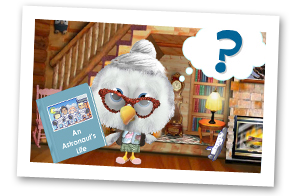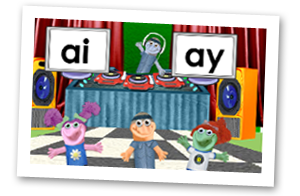2nd Grade Reading Strategy and Curriculum Standards
An essential part of the 2nd grade reading strategy is development of writing skill along with reading skill. Students use language arts worksheets created to help them write clear and coherent sentences and paragraphs that develop a central idea. Language arts lessons encourage children to consider the audience they write for, and to have a purpose in writing. The reading teacher guides students through researching, choosing a focus, prewriting, drafting, revising, and editing several versions.
Various types of reference materials will be part of this language arts activity, including a dictionary, a thesaurus, and an atlas. The 2nd grade reading strategy teaches students to revise original drafts to improve sequences and provide enhanced descriptive detail. Documents produced as part of these language arts activities are expected to be easily readable with clearly legible handwriting.
Interested in 2nd grade reading? Parents might also find the 2nd grade curriculum overview and 2nd grade language arts lesson plans helpful.
Reading Strategy and Curriculum Standards: Writing Applications
One of the 2nd grade reading strategy activities is for children to write a friendly letter complete with date, salutation, body, closing, and signature. This language arts activity develops reading skill by asking children to distinguish between complete and incomplete sentences, and to recognize and use the correct word order in written sentences. Good grammar is important for 2nd grade students too. They will use language arts worksheets to identify and correctly use various parts of speech, including nouns and verbs. Punctuation learned this year includes the use of commas in the greeting and closure of their letters, as well as with dates and items in a series. 2nd grade children are expected to use quotation marks correctly when completing their language arts lessons. The 2nd grade reading strategy also emphasizes the need for children to capitalize all proper nouns, words at the beginning of sentences and greetings, months and days of the week, and titles and initials of people, and to spell frequently used, irregular words as well as basic short-vowel, long-vowel, r- controlled, and consonant-blend patterns correctly. Learn more about second-grade spelling lessons and words.

In second grade language arts, Mother Bird teaches about story details in the reading comprehension lesson "An Astronaut's Life."
In this lesson, students are prompted to answer questions about details of the story.

Language Arts Lessons, Language Arts Worksheets, Language Arts Activity
The 2nd grade reading strategy includes development of listening and speaking skills. This vital language arts activity adds to a child’s reading skill as they learn to listen critically and respond appropriately to oral communication. Language arts lessons help them speak in a manner that guides a listener to understand their ideas. The students learn to use proper phrasing, pitch, and modulation. During comprehension testing, language arts worksheets may be used to help children analyze the purpose of listening. For example they may need to obtain information, solve problems, or simply enjoy what they’re listening to. Students are encouraged to ask for clarification and explanation of stories and ideas. The 2nd grade reading strategy is to have students give and follow three- and four-step oral directions, and children are asked to paraphrase information that has been shared orally by others.
Language arts lesson teach students who are organizing presentations to learn to maintain a clear focus. They are expected to speak clearly and at an appropriate pace for whatever type of communication they are engaged in. One language arts activity is to recount experiences in a logical sequence. Another part of the 2nd grade reading strategy is for children to retell stories, including mention of characters, setting, and plot, and to report on a topic with supportive facts and details. Brief recitations and oral presentations are delivered by 2nd grade students, regarding familiar experiences or interests that are organized around a coherent thesis statement. Part of this language arts activity is to have students describe story elements such as theme, characters, plot, and setting, and to report on topics with facts and details, drawing from several sources of information. In doing this, language arts worksheets may be helpful in helping students organize their thoughts. This speaking component of the 2nd grade reading strategy helps children develop greater reading skill.
Language arts lessons for 2nd grade students include development of reading skill by writing compositions that describe and explain familiar objects, events, and experiences. The 2nd grade reading strategy guides them, using, for example, language arts worksheets, to think through a logical sequence of events to produce brief narratives based on true life experiences. Elements of this language arts activity include writing descriptions of setting, characters, objects, and events in greater detail than before. Students are expected to use standard English conventions appropriate for 2nd grade when working on these language arts lessons.
*Reading Standards are defined by each state. Time4Learning bases its use of 2nd Grade reading standards on the national bodies that recommend curriculum and standards and the interpretations of it by a sampling of states notably Florida, Texas, and California.

My daughter almost had to repeat the 2nd grade, but after a year with Time4Learning she tested above grade level in math and is at a 5th grade reading level!
Second graders learn to recognize the different letter combinations that create the "a" sound from the Phonics Puppets.

The Time4Learning Curriculum Structure
Time4Learning has been refined through years of feedback from educators, parents, and students. Subjects are organized into chapters composed of interactive lessons, printable worksheets, quizzes and tests. Students are guided through the activities at their own pace by an automated system.
When students log in, they choose a subject, select a chapter, pick a lesson and complete the activities. A check-mark tells them where they left off, and completed work is clearly labeled with a check-mark or a gold star. Visual and auditory prompts guide students through the lessons, making it easy for even young learners to follow, and an online playground (controlled by parents) rewards and motivates them to finish their lessons.
Does your child have different achievement levels for math and language arts? No problem! Time4Learning lets you set each individual subject at the appropriate graded level, making this curriculum great for special needs and gifted students.









